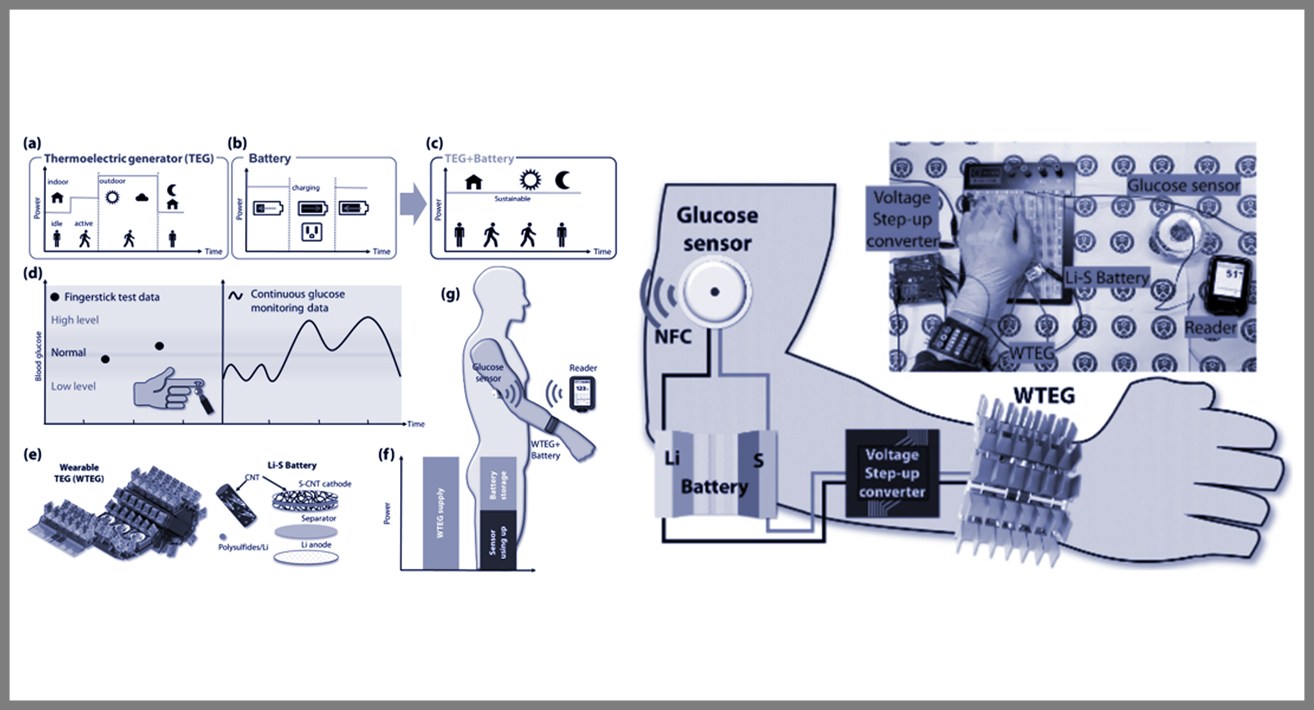
Self-charging Wearables for Continuous Health Monitoring
Remarkable advances in wearable electronics have brought numerous multi-functionalities in health monitoring, but demanded more power, necessitating larger batteries and frequent recharging Replacement or recharging of batteries, however, poses undesirable downtime in health monitoring. Thermoelectrics are promising in sustainably supplying power by converting body heat but wearable thermoelectrics have not been capable of producing power large or stable enough for the continuous operation of commercial health monitoring sensors. Here synergistic integration of a wearable thermoelectric generator (WTEG) and an emerging Li-S battery has delivered power sustainably and continuously, overcoming the biggest hurdle in utilizing thermoelectrics for wearable electronics in practice. The major drawback of low thermoelectric output voltage for charging batteries has been greatly alleviated with the high-performance Li-S battery whose charging voltage is only a half those of Li-ion batteries. The WTEG continuously produces large power up to 378 µW, operating a commercial glucose sensor (64 µW) and storing the remainder in the Li-S batteries for providing a stable voltage of 2 V even under large fluctuations in power supply and demand. This work demonstrates feasibility of operating a commercial glucose sensor only with body heat for the first time, to our best knowledge, engendering sustainable operation of wearables without interruption and tedious recharging/replacement of batteries. Nano Energy 79, 105419 (2021)


